Chris Baty's Blog, page 116
October 17, 2017
NaNo Prep: Is This Really a Good Idea?

Are you struggling with finding an idea you think is good enough to spend a whole month writing? Today, award-winning author Karin Tidbeck , a Season of Stories writer , shares her own experience with being the “ugly duckling of ideas”:
So you want to write a novel, but maybe you’re not sure if your idea is good enough. I’m here to tell you that you’re fine.
When I was in my early twenties, I started to get serious about writing. There was just one problem: my ideas, or rather, the lack of them. I was surrounded by creative, amazing people, and they all seemed to create incredible works of art without the least bit of difficulty. I was the ugly duckling of ideas. I found that I was great at building on other people’s ideas, improvising from them, developing them. But when I had to come up with something on my own, I froze. It seemed like there was nothing there.
My actual problem was that I discarded all of my own ideas because they didn’t sound cool enough, or clever enough. They were too silly, too weird to implement, too trite. What I didn’t understand at the time was that a lot of works of art start out with ideas just like that.
I got it once I took a creative writing course where we were forced to come up with ideas on the spot and just write them down. No second-guessing, no automatic self-criticism. I learned how to take that silly idea and set it spinning. I learned, gradually, that values like “good” or “bad” don’t really apply.
I wrote my debut novel, Amatka, in 2011. I had previously written poetry and short stories, but a novel felt like a different beast entirely. I had a basic concept that I wanted to explore: what if matter responded to language? I had thought a lot about it, I had written some texts that related to it, but the draft itself I wrote in a six-week rush, much like you’ll do during NaNoWriMo. I didn’t know whether my idea would carry all the way through to the end. Is this good? I asked myself all the time, or is it terrible?
“I learned, gradually, that values like ‘good’ or ‘bad’ don’t really apply.”My story “Reindeer Mountain”, which is included in the Season of Stories, was also a piece that I drafted under pressure, with a quickly approaching deadline. I had an idea: two bickering sisters in a family with a curse. I had no clue where that idea would take me. I just went along for the ride.
So much like me, you might have doubts. You might even feel like you shouldn’t be allowed near a keyboard, because your idea isn’t good enough. It’s completely normal. I still have moments when I wonder why on earth I haven’t been struck by lightning for putting such an idea on paper. I think most writers do. But “good” and “bad” don’t really apply here. What matters is what happens when you take that idea by the hand and tag along.
Karin Tidbeck is originally from Stockholm, Sweden. She lives and works in Malmö as a freelance writer, translator and creative writing teacher, and writes fiction in Swedish and English. She debuted in 2010 with the Swedish short story collection Vem är Arvid Pekon?. Her English debut, the 2012 collection Jagannath, was awarded the Crawford Award 2013 and shortlisted for the World Fantasy Award. Her novel debut, Amatka, was published in June 2017 by Vintage. She devotes her spare time to forteana, subversive cross-stitching, and Nordic LARP.
Learn more about Season of Stories here. For more about Karin Tidbeck please visit http://www.karintidbeck.com/
October 16, 2017
Road Trip to NaNo: After the Hurricane
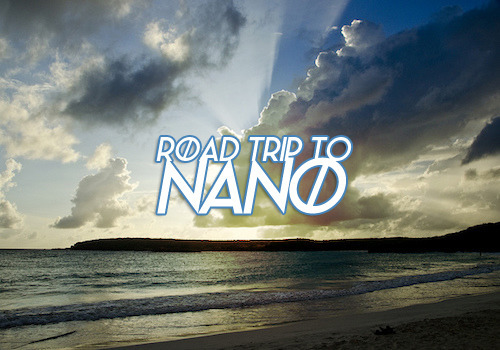
NaNoWriMo is an international event, and we’re taking a Road Trip to NaNo to hear about the stories being written every year in our hundreds of participating regions. Today, Amanda Rosa, our Municipal Liaison in the USA :: Puerto Rico region, shares a short message of hope and resilience:
Last November was the best year for the region of Puerto Rico. There were more members than ever participating, and many crossed their 50K word goal. The excitement didn’t fade and we were anxiously waiting for NaNo to start again this year.
Some wanted to achieve the 50K goals again or for the first time. Others just wanted to write no matter the word count; or, like me, they were looking forward to the word sprints we used to have every night.
Then Hurricane Maria happened.
More than 90% of the population of Puerto Rico doesn’t have power, and the projection is that is going to take a long time to get it back. Plus, at the time of the writing of this piece, only about 49% of our communications are working––a percentage that may be even higher, since there are still many towns without communications at all.
However, Puerto Ricans are resilient. I know that many will start their novels regardless of the darkness. Plot bunnies will be chased, and from the devastation beautiful worlds will be created. We may miss NaNo this year, but we will be back.
After our communications are restored and the power is back on, we will share our stories with the rest of the world. A storm is not going to stop us.
––Amanda Rosa,
Municipal Liaison for Puerto Rico
To help provide clean drinking water, food, medical supplies, and other necessities to the residents of Puerto Rico, you can donate to Unidos por Puerto Rico.
Top image licensed under Creative Commons from Diablo_blanco on Flickr.
October 14, 2017
Indie Author Day: Find Your Writing Community
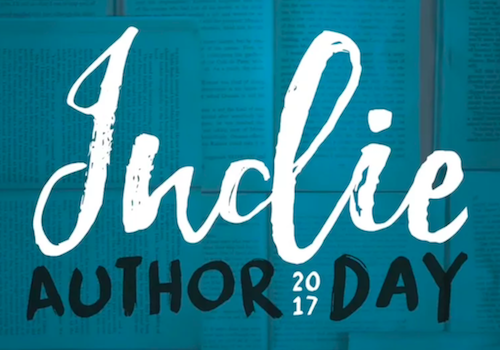
NaNoWriMo is proud to be a partner of the second annual Indie Author Day! On this one day, libraries around the world welcome their local indie authors in for a day of education, networking, mingling, writing, open mics, panels and much more! Today, Laura Chapman, Municipal Liaison of the USA :: Nebraska :: Lincoln region, writes about finding and creating a supportive writing community:
Confession: I was too scared to attend a Write-In my first two years of NaNoWriMo. Like a proper writer, I dreamed up (lame) excuses.
What if I get distracted?
What if there aren’t enough outlets and my computer dies halfway through a spectacular burst of creativity?
What if the other writers think I’m a hack?
The first two are legit concerns. (Pro tip: Take headphones and a power strip to your Write-Ins and enforce the Pomodoro Technique, where everyone writes for no-interruption blocks with breaks in between.) But the third—the scariest—fear is the least likely to happen.
When I finally worked up the courage to attend a Write-In, I was hooked. Sure, I sometimes get distracted. It’s hard not to be chatty when you find people who get you. I’ve had my computer die, making me improvise and use a notebook. But in the party room of a 24-hour diner, I found an eclectic group of people from all kinds of backgrounds and interests. We might have been strangers, but we connected in one crucial way: We were all writers dedicated (or crazy) enough to set a goal of writing 50,000 words in one month to pursue our craft.
There are plenty of perks to Write-Ins. You get in-person pep talks when you’re down. There’s someone to supply the perfect plot twist when you’re stuck. If you’re into behind-the-scenes details, it’s fun to discover what and how other people are creating. Plus, it’s hard to give up on your goal when your buddies keep hitting word-count milestones mere feet away.
In Lincoln, Nebraska, our support network extends to our Come Write-In locations.
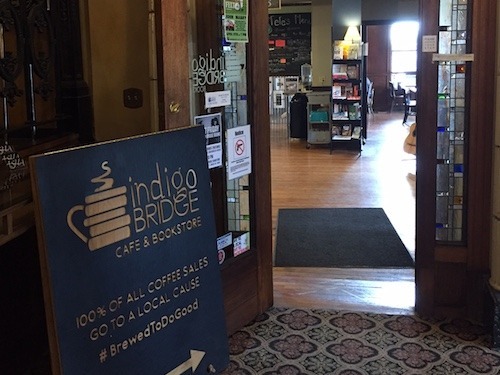
Indigo Bridge Books, an independent bookstore in the historic Haymarket, promotes literacy and activism in our community. The store shows its support by hosting signings and devoting shelves to local authors.
“As a store, our entire mission is wrapped up in community: building, resources, and support,” Manager Aja Martin said when I asked her why Indigo opens its doors to us. “It’s especially grand that NaNoWriMo connects to the literacy side of our work so well. Best of all worlds!”
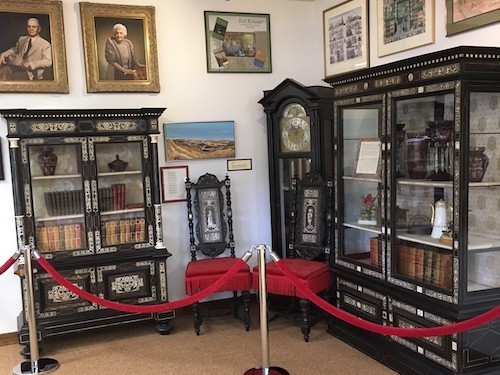
The Jane Pope Geske Heritage Room of Nebraska Authors at Bennett Martin Public Library houses a representative collection of the state’s authors. It’s inspiring to write in a room brimming with books by legends like Willa Cather, Ted Kooser, and Rainbow Rowell.
“The purpose of the Heritage Room—to celebrate and promote the work of Nebraska Authors—compliments the NaNoWriMo mission of helping people find their voices and achieve creative goals through writing,” said Curator Erin Willis. “The Heritage Room is an environment inspired by Nebraska’s literary history, and it is an honor to have a part in the living literary tradition as a Come Write-In location.”
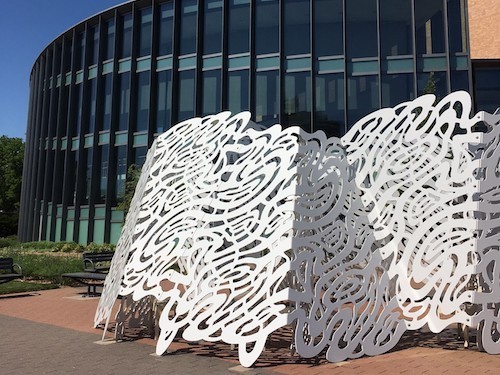
This year, on November 3, we will hold our third annual Write-In at the International Quilt Study Center & Museum. The day of writing at the museum has grown each year with attendees coming from outside of Lincoln. It offers a unique writing experience in a beautiful venue. (If you find yourself in the area that day, please join us.)
With Write-Ins, you aren’t alone. You can find people and places to support you through every word. You can build your own community.

Laura Chapman is the author of sweet and sexy romantic comedies, including Playing House, The Marrying Type, the Queen of the League series, and other novellas and short stories. A native Nebraskan, Laura holds a journalism degree and minors in English and history from the University of Nebraska-Lincoln. She is a member of Romance Writers of America, Romance Authors of the Heartland, and serves as the National Novel Writing Month municipal liaison for her community. When she isn’t penning her next novel, Laura enjoys watching football, traveling, binge-watching Netflix, and hanging out with her cats, Jane and Bingley. She enjoys connecting with readers on Facebook, Instagram, and Twitter. Check out her blog or visit her online at www.laurachapmanbooks.com.
October 13, 2017
NaNo Prep: Take a Story Field Trip

We’re deep into NaNo Prep Season, and this week, we’ve asked writers to share their thoughts on how to craft great plots and build immersive worlds. Today, NaNoWriMo Executive Director Grant Faulkner shares an excerpt from his new book,
Pep Talks for Writers
. He invites you to fill out the setting of your novel by taking a story field trip:
One of the mistaken perceptions of writers is that all of their writing gets done at their desks, that plots, characters, and the telling details that make a story blossom into life just flow out of a writer’s mind and onto the page. As much as I hesitate to lure you away from maximal word production (because most of my pep talks encourage you to just keep writing in one way or another), one of the wonderful side benefits of being a writer is not just the places you get to go in your imagination, but the real places you get to go to explore your story in all of its nuances.
It’s time to go on a story field trip—an imaginative scavenger hunt to gather details, sensory information, and character insights. It’s just like the kind of field trip you went on in elementary school, except you don’t have your parents sign a permission form and you don’t have to travel on a bus with a lot of screaming kids (unless your story takes place on a school bus, that is). There’s nothing like venturing out to an actual place to experience it so you can write about it with the ring of authenticity. The location of your story can function almost as a character in your story, so know it well.
“One of the wonderful side benefits of being a writer is not just the places you get to go in your imagination, but the real places you get to go to explore your story.”Is your main character a doctor? Go to a hospital one day and sit in an emergency room and observe all that is going on—the people waiting in pain, discomfort, or boredom; the nurses bustling about; the out-of-date magazines in the waiting room; and, yes, the doctors. How does your doctor character relate to the pain in a patient’s eyes? How does your doctor view an impatient nurse? How does he or she wear a stethoscope?
Spend some time walking the hospital’s halls and attune your senses to all of the little things you might not think about when you’re there as a patient. What does the hospital smell like? How is it decorated? Where would your doctor eat lunch? See if you can even do a brief interview with a doctor. How many patients does he or she see each day? What thoughts does he or she carry home from the day?
I once went to a cemetery at night to see the moon’s chilly glow on the tombstones. Another time I drove from San Francisco to Reno, tracing the road my main character was fleeing on. I ate tacos in Chowchilla and drank a Coke by an irrigation ditch for one story, and dressed in my suit and went to a Pentecostal church on a Sunday morning for another.
A story field trip can take many forms, and sometimes we have to make do with our limitations. I once wrote a novel that took place in Thailand, but I didn’t have the time or money to go to Thailand. I knew I couldn’t go deep into my descriptions of it by looking at it on a map. What did I do? I ate in Thai restaurants. I watched Thai movies and soap operas (even if I couldn’t understand them). I listened to Thai music and read Thai books. I discovered that the clerk at my dry cleaning shop grew up in Thailand, so I asked her questions about her childhood. It was one big virtual Thai field trip that helped me shape my novel.
Sometimes I take story field trips without any research purpose, just to get the creative juices flowing in a different way. One of my favorite field trips is to sit in a train station and simply observe the people. People reveal themselves in different ways when in transit. They’re in that odd state of suspension, between places, carrying high expectations of the pleasures ahead or the dread of what’s to come. They’re fleeing a place or running home. Some travel in packs, and some travel in what seems like a perpetual solitude. I watch to see how they reveal themselves; I eavesdrop on their conversations; I try to surmise their stories. They carry questions that stir my imagination, and in observing them, I bring a deeper sense of humanity to my characters.
There are some downsides of a story field trip. It can be tempting to twist your characters and plot into illustrating your research instead of letting your observations serve the characters’ stories. It’s easy to fall so much in love with all that you’ve gleaned that you force details where they don’t belong. Focus on imparting the telling details rather than a random inventory of your notes.
In the end, perhaps the biggest purpose of the story field trip isn’t just for information, but for confidence. By spending a few hours inhabiting the world in your story, you’ll write much more confidently about that place. You’ll trust your words because you’ve grounded them with a foundation of experience.
Try this: Inhabit Your Story WorldHow can you inhabit the world of your story? Is there a key setting, occupation, or encounter that you can tap into in real life? Go there. Smell, touch, listen.
––Grant Faulkner, NaNoWriMo Executive Director.
Autographed copies of Pep Talks for Writers can be purchased in the NaNoWriMo store.
Top image licensed under Creative Commons from Shinichi Sugiyama on Flickr.
October 12, 2017
NaNo Prep: A Quick-and-Dirty Guide to Building a Fantasy Religion

We’re deep into NaNo Prep Season, and this week, we’ve asked participants to share their thoughts on how to craft great plots and build immersive worlds. Today, columnist and ten-time participant Dianna Gunn offers three tips for creating an authentic religion in your speculative fiction:
So
you’ve decided to write your NaNoWriMo novel in a fantasy world. This
is a great idea! Fantasy is only limited by your imagination, and
there’s always a sensible way to work in ninjas when you get stuck.
But
creating your own world isn’t as easy as it seems, which is probably
why you’ve come here seeking aid. After all, it’s almost halfway to November and your planning… well, let’s not talk about the state it’s
in, shall we?
I’ve spent an entire decade building worlds at record pace for NaNoWriMo,
and I’ve got a few tricks up my sleeve. Today, I’ll show you three of
the most powerful tricks I’ve learned for quickly building a
believable fantasy religion, since religion is a driving force in
most fantasy worlds.
Follow
these three steps to create a fantasy religion on the fly:
between monotheistic and pantheistic.
Monotheistic
religions feature only one god or goddess; there is usually also an
opposing devil-type force, though not always. Pantheistic religions
follow many deities, often both gods and goddesses.
Choosing
a monotheistic religion is usually easier, and allows you to easily
draw parallels with Judeo-Christian religions. Developing a
pantheistic religion requires more work, but there are several ways
to speed up the process, and you can draw parallels with many
different mythologies.
on familiar archetypes.
The
easiest way to make a religion’s gods and goddesses believable is to
take familiar mythological archetypes and modify or expand on them.
This allows you to give a clear image of your fantasy religion with a
few well-placed images.
Using
familiar archetypes can also save you a lot of time up front, since
you already know what you like—and hate—about those archetypes.
For example, I like the common association of fire and war, but I’m
tired of hyper-masculine fire gods. So I created Taelanna, a fire
goddess closely associated with the phoenix, for my book Keeper
of the Dawn.
What
religious archetypes do you love? What archetypes drive you crazy?
Start with these and fine tune them to fit your world.
a creation myth.
At
the root of every great religion there lies a creation myth: a story
that attempts to explain not only human origins but also human
nature.
The
nature of these myths has a huge ripple effect on your religion, and the rest of the world you build. For example, if
your religion believes a goddess created the world on her own,
they’ll likely respect women more than if they believe humanity was
created by a male entity. If your characters believe in a creation myth that casts women
in a purely supporting and reproductive role, their world will most likely be plagued by systematic
misogyny.
If
you only write one myth before starting your novel, make it the
creation myth. You can find plenty of inspiration for mythology—and
its impact on your society—in Crash
Course World Mythology: Social Orders and Creation Myths. Once
you’ve got an idea, give yourself a solid half hour and free write
the myth—you can refine the details after NaNoWriMo!
Bonus: Use
an element of this creation myth as the basis of a common prayer or
curse. A few of these little details sprinkled throughout your story
can make it look like you’ve done more world-building than you
actually have, bringing your setting to life.
These
three steps will help you create a solid background religion, but if
religion is going to be a major part of your story you’ll want to
develop it more. If you want to build a detailed religion, I’ve
compiled a special world-building
resource list for fantasy science fiction writers with many
resources dedicated to building fantasy religions.

Dianna Gunn is a ten year NaNoWriMo participant with a lifetime word count of over 1.3 million (and that’s just during Nanowrimo!). Her debut YA fantasy novella, Keeper of the Dawn , came out in spring 2017 through The Book Smugglers Publishing. She blogs about mental health and writing on her blog, The Dabbler , and runs two writing advice columns at Write Plan Editing . Between columns you can find her ranting about anything and everything on Twitter @DiannaLGunn.
Top image licensed under Creative Commons from chiaralily on Flickr.
October 11, 2017
NaNo Prep: Outline Your Story Like a Subway Map

We’re deep into NaNo Prep Season, and this week, we’ve asked participants to share their thoughts on how to craft great plots and build immersive worlds. Today, author and entrepreneur Gabriela Pereira shares her method of mapping out her story:
As a New Yorker born and raised, I think of an outline as being like a subway map. What I love about this approach is that it allows you to see how the various threads of your story work together, but you can also tease those elements apart and look at them individually to see how each thread holds up on its own.
When you make a subway map outline, each line represents a different subplot or story element you want to track. The dots (or stops) represent scenes in your story. Some scenes are like local stops on a subway and apply only to one story thread, while other scenes are like express stops and represent intersections between the story threads and mark key moments in your story. For an example of this technique in action, check out the subway map of Suzanne Collins’ The Hunger Games.
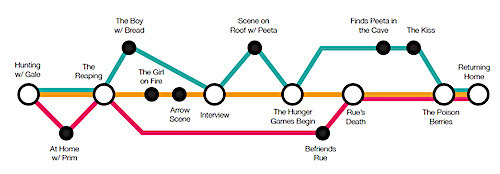
Want to learn how to put together a story map like this? Here’s a step-by-step guide.
Step 1: Write out your scenes.List out all the scenes in your story or novel. I like to use index cards for this step, because it allows me to move scenes around and also look at each one apart from the rest of the story. On each card I’ll give the scene a title, then list the major characters who appear and what happens in that scene. I also make a note to myself about why the scene is important to the story overall, because if I can’t think of a compelling reason for that scene to exist, then I should consider cutting it altogether.
Step 2: Choose which elements to track.You can track just about any aspect of your novel or story with this mapping technique: multiple plot lines, different points of view, and recurring images or thematic elements. You can even use story-mapping to keep track of your supporting cast and which characters appear in which scenes. To avoid letting your map sprawl and become out of control, I recommend focusing your map on either plot, character, or imagery. Once you have chosen which elements I recommend color-coding your scenes according to the thread (or threads) where it appears.
A plot-centered map focuses on your novel or short story’s main plot and subplots and each of these threads has a dramatic question that drives it. In our Hunger Games example, the main plot concerns the major dramatic question (MDQ): “Will Katniss survive the Games?” This book also has a series of subplots, driven by lesser dramatic questions (LDQs), like “Will Katniss return Peeta’s affections?” Notice that the dramatic questions—both major and lesser—focus on the protagonist, since this is the character driving the story.

A character-centered map is useful if you need to keep track of a sprawling supporting cast or are using multiple points of view (POV). For this type of story map, instead of worrying about MDQs for the different plot threads, you will need to think of dramatic question specific each character you are tracking. This question usually centers around that particular character’s biggest desire. For example, the dramatic questions for characters in the movie The Wizard of Oz would be: “will Dorothy ever get back to Kansas?” or “will the Scarecrow finally get a brain?”
An imagery or theme-centered story map can be useful when you need to track recurring images or thematic elements as they appear throughout your story. The elements you track with this type of map can be anything (e.g. music, color, art, weather, nature, etc.), but relate to the emotions you want to make your readers feel. This type of story map is extremely powerful because it helps you understand and enhance how your readers experience your book.
Step 3: Create Your MapOnce you have created your scene-by-scene outline and labeled each scene according to the various threads or elements you want to track, the only thing that remains is to draw the actual map. Start by plotting the scenes where two or more threads intercept (the express stops), then fill in the other scenes (local stops) around those pivotal moments.
With this map, you’ll be able to look at how different plotlines, characters, or thematic elements intercept, but you can also pull these threads (subway lines) apart to see how they work independent of the rest of the story.
While this approach might look very different from a traditional outline, you can easily extract a list outline or spreadsheet from your map. You can also adapt this technique and use it in concert with other types of outlines. As you gear up for NaNoWriMo, the most important thing is for you to find an outline technique that work best for you, and I hope you will give story mapping a try.

Gabriela Pereira is an author, speaker, and entrepreneur who wants to challenge the status quo of higher education. As the founder and instigator of DIYMFA.com, Gabriela teaches at national conferences, regional workshops, and online. She is also the host of the podcast DIY MFA Radio and author of the book DIY MFA: Write with Focus, Read with Purpose, Build Your Community (Writer’s Digest Books, 2016). Go to DIYMFA.com/storymap to download a print-friendly version of the story map from this post.
October 10, 2017
NaNo Prep: 3 Tips to Create Fantasy Worlds People Would Trade Reality For

We’re deep into NaNo Prep Season, and this week, we’ve asked participants to share their thoughts on how to craft great plots and build immersive worlds. Today, author and participant Klara Raškaj offers three tips for creating fantastic and tempting worlds:
No matter how many children Hogwarts keeps endangering every year, you’ll still find too many people (myself included) who’d rather pack their bags this very moment, and GTA their way to wizard school (like Harry and Ron in Chamber of Secrets). So, if you’re looking to learn more about world-building, here are my tips for creating fantastic worlds that will tempt your readers to leave their jobs and loving families behind:
1. Offer Bachelor’s Degrees in Dragonology.Everyone’s familiar with the infamous “midichlorians” from Star Wars. Most of us are able to agree that they are the unwanted explanation of the Force. “Don’t try to explain magic with science,” they say. And I agree—if you try to combine the two, a lot of times, you won’t end up pleasing anyone.
However, fans often try to act like scholars when it comes to their favorite stories. They are so fascinated by the worlds writers provide them with, they want to dabble deeper into the rabbit hole and see what makes them tick.
You don’t need science to make your magic credible, nor do you need magic to make your world’s science and laws of nature more mysterious and outlandish. Provide the readers with as much, or as little as you wish, but make sure those elements that differ from our reality actually make logical sense, and have some types of rules they abide by. Limitless possibilities might sound amazing, but they get really dull really fast. Limitations lend themselves to better storytelling, because conflicts and obstacles are what make for interesting stories.
When in doubt, ask yourself: Would you rather read about a guy who could summon anything he wanted to defeat his enemies, or a guy who could only summon self-aware household furniture, and then had to figure out a way to play that to his advantage?
2. Allow readers to join House “Guys-in-Viking-Hats”.Let’s take A Song of Ice and Fire, for example. It’s nice to imagine living in a medieval-like world with dragons and magic, but belonging to a smaller subgroup of people—or house, in this case—with its own sigil, colors, secrets, and ambitions give the members a sense of purpose. They feel accepted, and part of something greater than themselves. I mean, why do you think it’s so fun to take those “Which Game of Thrones House Are You” quizzes online? It adds more to your identity. You’re not just Bob anymore. You’re Bob of House Guys-in-Viking-Hats!
People have always had the need to be a part of some collective, and pandering to this need is one unusual way you can make your story’s world more inviting to the reader. If you write a world with opportunities to create some sort of labels (positive or neutral labels, mind you), chances are that the readers will want to associate themselves with one of those labels, making them more immersed in and concerned with the story’s world. And what’s a better sign of good world-building than your readers wanting to be a part of that world?
3. Write about the gods among us.Colossal, extremely powerful, very important, often well-known beings—whether they be adversaries or allies or neither—appeal in fictional stories. “Gods among us” are creatures that make us feel like animals in comparison. Their mere presence makes everything feel much grander and more important than it probably is.
Image a story where two characters are having dinner, and all of a sudden, a couple of random ninjas burst in to trash the place. Intense, right? Now, imagine a story where two characters are having dinner, and all of a sudden, ninjas burst in… led by Grand Duke Evilstache, Randoville’s richest and most handsome (according to People Magazine 2017) leader of organized crime! Whoa! What could possibly be so important that Grand Duke Evilstache himself has come to wreck this little bistro? This is huge!
Having characters do great things and perform unbelievable tasks is what makes a story amazing, but including important, extremely powerful figures is what makes a story epic.
In short, to create the most fanfic-worthy worlds your readers are sure to adore, write down strict rules for the inner-workings of your world, include elements that make us humans feel like ants, and provide the reader with exclusive clubs to fantasize about joining.
I truly hope you’ll find these tips helpful as you venture forth into November! Be bold, be daring, and be shameless! Let’s make this year’s NaNo novels the craziest ones yet!

Klara Raškaj—fantasy author, starsage, breaker of expectations. Her passion is writing epic tales with otherworldly creatures and cultures. But, being a huge fan of H. P. Lovecraft, she never leaves a story unsprinkled with elements of horror and mystery. Off the clock, she indulges in meditation, video games, cartoons, anime, and too many matcha lattes. Her most recent endeavors include working on two serial novels (SPANK and His Whispers), and debuting in her very own podcast.
Top image used licensed under Creative Commons from Olivia Alcock on Flickr.
October 9, 2017
Road Trip to NaNo: Using Your World to World-Build
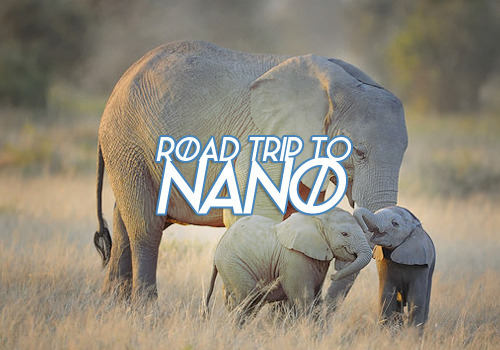
NaNoWriMo is an international event, and we’re taking a Road Trip to NaNo to hear about the stories being written every year in our hundreds of participating regions. Today, Anna Huckabee, our Municipal Liaison in the Africa :: Elsewhere region, talks about using your surroundings to help you build realistic worlds on the page:
Africa, the continent formerly known as “Dark”. Yet when you live here, you find it is exactly the opposite. People are warm, friendly, welcoming. The sun shines almost every day, and it’s warm all year round. Africa is gaining a voice in the world-wide writing community—and if NaNoWriMo is any indication, that voice will continue to grow in the years ahead.
The land is almost as diverse as its close-to-a-billion residents. You can visit beaches, deserts, mountains (with glaciers!), savannah, rain forests, and jungle. There are huge, modern cities, and villages made entirely of mud huts. Some of the roads are dirt. Others are paved. Its northern- and southern-most countries receive snow in their winters, which are opposite of one another since the continent straddles the equator. There really isn’t a setting for your novel that can’t be found in Africa.
Setting might seem to take a backseat in your novel planning, but it really shouldn’t. The place your characters inhabit and interact through your plot can be just as important as the plot itself. Africa wouldn’t be Africa if there were no elephants or lions on the savannah, and soothing breezes that blow through banana leaves and sound like rain. But how do you write a unique setting? There are several ways to do this:
First, open your eyes to things you don’t normally notice: the road covered with potholes, the sound of rain on the roof.Second, ask yourself “what if?” What if that rain were washing down a mountainside or across a desert? What would it sound like? How would it feel? What difference would it make for your characters?
Next, be willing to combine things you gather from many sources. You might see pictures in magazines that spark your imagination. You decide to combine those desert rock formations with a pilgrimage across the savannah to gather an offering of sap from the one tree that remains of its species. You might see a jackfruit and decide it’s a narcotic in your world that your characters would do anything to obtain.
The things we see—things we can quantify from the world around us—are springboards for our imagination. They help us envision things we have never seen and build a world around them in which our characters live and interact.
Our setting is limited only by our imagination.
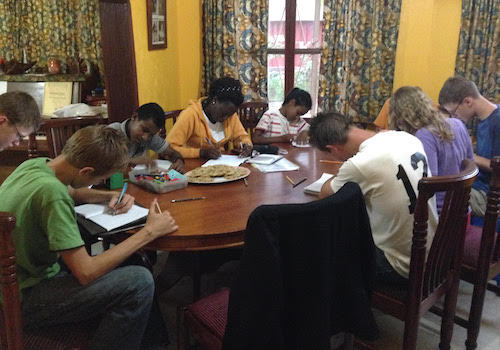

Anna Huckabee lives in Uganda, East Africa where she is the Africa :: Elsewhere ML. She’s participated in and won NaNoWriMo since 2011. She writes a little of everything: sci-fi/fantasy, romance, and literary fiction. When she isn’t writing, she and her family work in a UN refugee camp with refugees from all over East Africa. Her passion is literacy for women and children.
Top image licensed under Creative Commons from Diana Robinson on Flickr.
October 6, 2017
NaNo Prep: 3 Character Design Tricks From a NaNo Pro

We’ve officially entered NaNo Prep Season! This week, we’ve asked participants to share their thoughts on how to create great characters. Today, 13-year NaNo veteran Sarah Pottenger offers three tips on how to overcome some of the toughest obstacles to character design:
My 2015 NaNo was an exercise in frustration. I had the seed of an idea and a handful of interesting characters and relationships, but no plot. I hit 50,000 words by the month’s end, but I came to the crushing realization that I’d have to start over.
In 2016, I was determined not to let that happen again. I had a long weekend off work last October, so I booked a room at a cute B&B not far from home. I holed up in that room with the Ready, Set, Novel! notebook and began to work my way through it. After 12 years of NaNoWriMo, it was the most planning I had ever done.
Since I had to spend the bulk of my time on plotting, I couldn’t get caught up in creating characters in the same ways I had in the past. I’m an overthinker in writing and in life; I will spend days obsessing over tiny details of a character’s appearance or choosing a name. But because I had to limit my character time, I had to boil it down to on the most essential things I needed to know about my major characters, and I had to work differently.
Here’s what I’ve learned about creating characters after 13 years of NaNo:
1. Start with the basics.It’s October! NaNo Prep has begun, so I know what I have to do. The four things I need to find out about my characters are:
Their name Their role in the story What makes them unique Their personalityThat last one sounds big, but I only need to know the broadest strokes—whatever it is about them that tells me how they will react and what they will do next. I can’t always articulate this when writing, but it’s instinctual enough that I know when I’ve screwed up and written something my character wouldn’t say or do.
2. Detailed questionnaires can be a time sink.This is so hard for me. Remember when personal questionnaires used to go around on Facebook, and before that, e-mail? I adored filling them out. The character stuff that’s all over the internet is a huge temptation. I could spend a ton of time agonizing over my main character’s favorite flavor of ice cream, but is it relevant to my story? Surprisingly few of those questions are.
3. Know your weaknesses.My two big weaknesses with creating characters are visualizing them and overthinking their names. I’ve figured out how to work around that by picking names beforehand and not letting myself change them during November, and by creating a Pinterest board in October with pictures of people who remind me of my characters.
It’s not a perfect system. I can’t tell you how many times I’ve changed the name of a major character in my 2016 novel after November. I wrote my whole 50k last year before I realized I had the wrong character as the antagonist. It has always been trial and error, but the years I’ve deviated from it have definitely been the most difficult.
Having swung across the entire spectrum of pantsing to planning, I finally feel like I’ve hit on the right way to plan without overplanning. I have my next Ready, Set, Novel! notebook, I’ve started my Pinterest board, and I’m excited for November 1!

By day, Sarah
Pottenger is the curriculum coordinator at a Colorado elementary
school. By night, she is a were-novelist in search of the perfect
writing spot. A former ML, Sarah is a 13-time NaNo participant and
12-time winner who spends the entire month of November wearing her
NaNoWriMo sweatshirt and drinking far too much coffee from her
NaNoWriMo mug. What she really wants to know how soon there will be
NaNoWriMo socks.
Top imaged licensed under Creative Commons from Justin Kern on Flickr.
October 5, 2017
NaNo Prep: How the Ancient Art of People-Watching Will Make You a Character Pro!
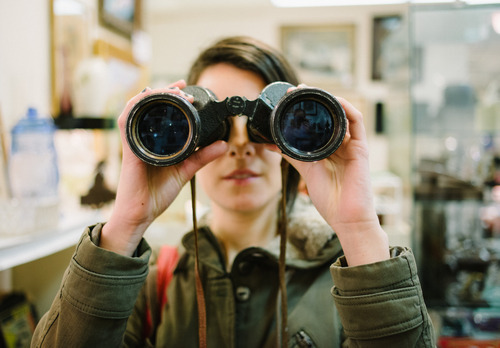
We’ve officially entered NaNo Prep season, and this week we’ve asked some participants for their thoughts about building strong characters. Today, participant Tessa Fang shares some tips on how to use real-life people as inspiration for realistic characters:
In these crucial months leading up to NaNoWriMo, I have found that it is extremely helpful to prepare your novel. That way, during the 30-day sprint to the finish there aren’t as many hurdles to jump over.
So what is my favorite way to prepare for NaNo? I would say through character creation. Believable and likable characters are one of the most important aspects of any story. I have found that a solid understanding of different characters can fuel a story on its own.
Failing to prepare your characters well could ultimately lead to complicated plot problems and a lot of extra writing. During the revision process leading up to publication, I often found myself re-writing scenes because of unnatural character behavior.
By far my favorite, yet slightly creepy, way to create believable characters is through observation. Watching people is the easiest way to come up with character ideas, simply because there’s no guessing involved. In the months before November I try to go to as many public places as possible; public parks, restaurants, and malls being my favorite. I often bring a pen and a notebook, or a laptop if convenient, and just sit around and watch––while looking busy.
“On a people watching excursion, take note of any behavior, saying, or habit that is unique, odd, likable, or gross.”Through these “people watching” experiences I’ve discovered small things and eccentricities that can make characters relatable. I noticed that some people have slight accents, or pick the skin along their finger nail, or say, “You know what I mean?” way too often. I took into account who said “yes”, who said “yeah”, and who just nodded their head. During conversations, some people sat up really straight while some slouched back very relaxed. All these small details are important in understanding your characters and making them come to life.
So how do you actually create a character? It’s not just copying a single person and imagining how they would act in a certain situation, although you could certainly do that. But I like to go with a technique I call “Character Creation Through Stranger Mixology.” This helps create believable, yet unique characters.
This is how it works: on a people watching excursion, take note of any behavior, saying, or habit that is unique, odd, likable, or gross. It can be anything: the fact that someone wears a bow in their hair, or that they always have untied shoes, or that they go out of their way to avoid touching anyone in a crowd.
After you’ve collected all your traits, mix them up! Craft the character however you want. Maybe you want to craft someone who is a quiet, odd, but lovable introvert. Look through your list and give the character traits that match the general description. Then rather than having a slightly generic character, they develop small intricacies that bring them to life.
Good luck to everyone participating in NaNoWriMo this year!

Tessa Fang is a 17 year old student at Winston Churchill High
School and CityDance Conservatory. She is especially passionate about math and
science; in particularly the connection between engineering, the arts, and
creativity. Throughout high school, Tessa has dedicated her time to exploring
these connections through creative writing, engineering, and design. Her latest
projects include the published novel, Incarceration; an interactive art exhibit, Silhouettes; and a website to build and print custom
journals, Younique Journals. To learn more, visit her website, tessafang.com
Top photo licensed under Creative Commons by Chase Elliott Clark on Flickr.
Chris Baty's Blog
- Chris Baty's profile
- 62 followers



